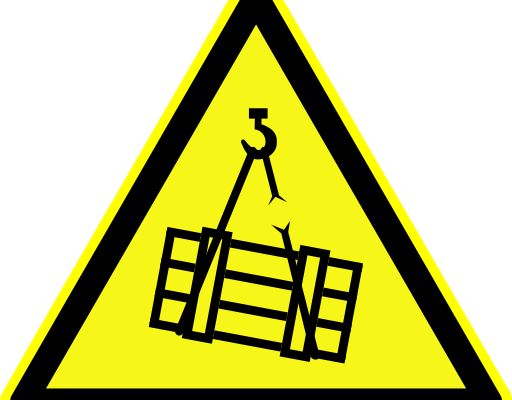Column By Natalie Pace

Next week hosts two key milestones, neither one of which portend good news for stocks. The 4th Quarter and full year 2018 GDP report finally lands Feb. 28, at 8:30 am ET. (We missed the advance estimate that should have been released Jan. 29, due to the government shutdown.) March 1, marks the date that we hit the Debt Ceiling again. The Treasury Department must use “extraordinary means” to pay bills until Congress raises the Debt Ceiling and allows the department to borrow more money – something that has become far too ordinary in today’s over-leveraged world.
So, how bad will next Thursday’s GDP report and debt ceiling be? Is there a chance that the news will be better than expected?
GDP Report Feb. 28, 2019, at 8:30 am ET.
Last year, the 4th quarter GDP report was only slightly lower than the 3rd quarter. But it sparked a three-month Wall Street rout at the beginning of 2018 that became the motif for the year. In 2018, the Dow Jones Industrial Average sank by 6 percent, while the NASDAQ Composite Index shed 4 percent of its value
On Feb. 28, the 4th Quarter 2018 GDP growth is predicted to come in far lower than the growth in the 3rd Quarter, which was 3.4 percent. GDP NOW (The Atlanta Federal Reserve’s forecasting) pegs 4th Quarter 2018 GDP growth at 1.4 percent, while the New York Federal Reserve Bank projects that growth will be 2.5 percent. That spread is wide enough to be basically unusable. However, both are substantially lower than the 3rd Quarter 2018 GDP – something investors are not going to be happy with. So, unless there is a big upside surprise in these numbers, March could start off with an implosion
Two-thirds of business economists surveyed by Bloomberg in September of 2018 believed that the U.S. will enter a recession over the next 24 months – before the end of 2020, but not in 2019. The last two recessions cost investors more than half of their nest egg, and the next one looks to be as bad or worse. “When it comes, the next crisis and recession could be even more severe and prolonged than the last,
Debt Ceiling March 1, 2019.
As of Feb. 22, the U.S. public debt is over $22 trillion. Our nation will have to borrow more money to pay our debt and budget obligations this year. However, the Treasury Secretary will not be able to borrow more money after March 1, until Congress raises the Debt Ceiling.
In 2018, this was a non-issue due to a surprising move from the Republican president and Democratic leaders. On Feb. 9, 2018, The president signed the Bipartisan Budget Act into law, after reaching across the aisle to cut a deal with the Democrats. This averted a review of the U.S. AAA sovereign credit rating. Both Fitch Ratings and Moody’s Investor Services have indicated that the U.S. debt is too high for a AAA rating, but have been giving the U.S. a pass due to the dollar being the reserve currency and our ability to control our own currency
You won’t hear much about the Debt Ceiling until late summer/early fall, even though Treasury Secretary Mnuchin will begin running the U.S. government like a “piggy bank” (his words) next week. The tax income will provide the necessary capital to pay bills for a few months. If the administration cuts a deal with Congress to raise the debt ceiling before we run out of money, then chances are good that the U.S. will keep its AAA rating. Moody’s indicated Dec. 12, 2018, that rating pressures might emerge in the coming years due to the rising debt burden and “diminishing debt affordability.” However, the agency believes that “the US will increasingly rely on its exceptional economic strength and the unique roles of the dollar and Treasury bond market in the global financial system to preserve its Aaa credit profile.”
Investors have grown accustomed to having a debt ceiling crisis every other fall, and to having leaders raise the debt ceiling at the last minute. As dysfunctional as this is, as long as more debt is issued and bills are paid, Wall Street won’t freak out. In the event that Secretary Mnuchin runs out of resources before the debt ceiling is raised, Fitch Ratings could be the one to downgrade the U.S. credit. Fitch’s analyst and economist Charles Seville noted Jan. 9, 2019, that the government shutdown shows that “there is a problem with the coherence of policymaking in the U.S.” A downgrade would be negative for stocks and positive for gold, just as it was in August/September of 2011 when Standard and Poor’s downgraded the U.S. credit from AAA to AA+.
The bottom line on all of these events and many more economic headwinds on the horizon is that this business cycle is starting to show its age. If you don’t want to get caught in the maelstrom, it’s time to get a second opinion on just how safe and secure your nest egg is. As John F. Kennedy said, “The time to fix the roof is when the sun is shining.”
Natalie Wynne Pace is the author of the Amazon bestsellers The Gratitude Game, The ABCs of Money and Put Your Money Where Your Heart Is (aka You Vs. Wall Street). She has been ranked as a No. 1 stock picker, above over 835 A-list pundits, by an independent tracking agency (TipsTraders). The ABCs of Money remained at or near the #1 Investing Basics e-book on Amazon for over 3 years (in its vertical). Natalie Pace’s great, great grandfathers James Pace and Lorenzo Wright were some of the original pioneers of Graham County. Call 310-430-2397 to learn more about Natalie Pace’s books, private, prosperity coaching, and 3-day Financial Empowerment Retreats.










